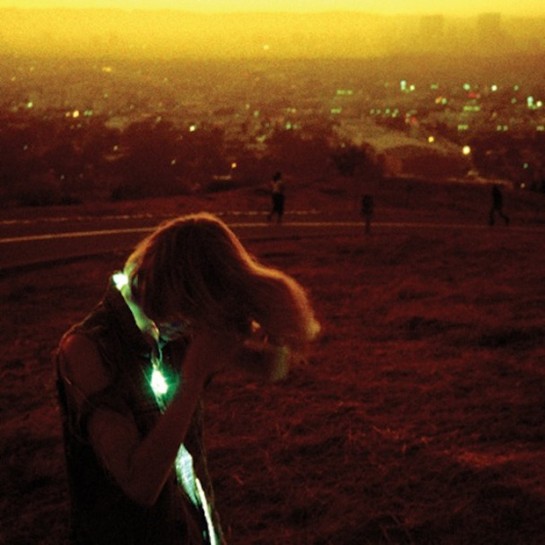Chillwave or not, Alan Palomo and his brainchild Neon Indian have made quite the considerable ripple in the eyes of those transfixed on the strange world that Palomo and his friends occupy. This ripple came seemingly from nowhere as Neon Indian dropped its first album, Psychic Chasms, in relative anonymity. Of course, certain creative privileges come along with releasing an album from darkness, but living in the spotlight for the past two years has allowed Neon Indian to enjoy a wholly different set of privileges. Among these are two TV appearances on Late Night with Jimmy Fallon, a collaborative EP with neo-psychedelia giants The Flaming Lips, a trippy infomercial for a mini analog synthesizer designed especially for Neon Indian, and of course, countless new listeners.
And so, in their newfound position, Neon Indian released Era Extraña on September 13. It’s clear even on first listen that different circumstances have led Palomo to create a considerably different record from Neon Indian’s previous effort Psychic Chasms. Still present are the vast and repetitive electronic landscapes, populated by noises as varied as heavily distorted basslines, infernal ticks of dissonance, ’80s videogame-worthy beeps and blips, and just plain sonic weirdness. The differences here seem to arise from another world entirely, one of emotional depth. While Psychic Chasms contained an element of summer-innocence coupled with drug fueled imagination, Era Extraña seems to have grown up. “Deadbeat Summer,” “Should Have Taken Acid With You,” “Terminally Chill” and “Laughing Gas” of Psychic Chasms are absent for the like of “The Blindside Kiss,” “Heart: Decay,” “Fallout” and “Halogen (I Could Be A Shadow)” of Era Extraña. As comes with any spell of aging out of adolescence, Era Extraña takes the problems that Psychic Chasms makes you forget and forces you to look them in the eye. The end result is an album that at times can be downright lonely, and this characteristic is a little scary when added to the emotional fragility brought out by the robotic unfamiliarity and half-whispered verses of Neon Indian.
This is not to say by any means that this loneliness is unintentional or at all damaging to the overall success of the album. It’s hard not to call Era Extraña an album of heartbreak, and in this respect a call to introspection is needed. “Polish Girl,” an upbeat number with an arcade worthy harmony – and the album’s standout track – begins the movement with the croon of a question that we’ve all asked at one point or another, “Do I still cross your mind?”
“Hex Girlfriend” picks it up a couple songs later with more questions that now address the possibility of a relationship torn by infidelity. “Does it make you / Does it make you feel alright / Did they make you / Did they make you feel alright?” “Hex Girlfriend” is a song that stands out mostly for its lyrical diligence, as it goes on to end with the love-cry “My flesh won’t follow me forever / But your touch is far and few between.” While the lyrics of Era Extraña are perhaps not the most poetic or subtle, they certainly have strength when coupled with Palomo’s voice.
“Fallout” is a slow and calculated ballad that continues on with the theme of love lost, the chorus repeating endlessly a call which states, “If I could fall out of love with you / I need to fall out of love with you / Please let me fall out of love with you.” It is within these songs in the middle of the album that the welcoming expanse of a depressed void is found.
“Future Sick” comes to the rescue as a song that fittingly looks forward rather than backward; engaged rather than disengaged.
Overall, Era Extraña is an intriguing album very fit for a listen even if just for its catchy synthesized soundscapes. For the dedicated Neon Indian or chillwave fan this should be a very likeable follow-up to Psychic Chasms, one with many differences and evolutions to be explored.









